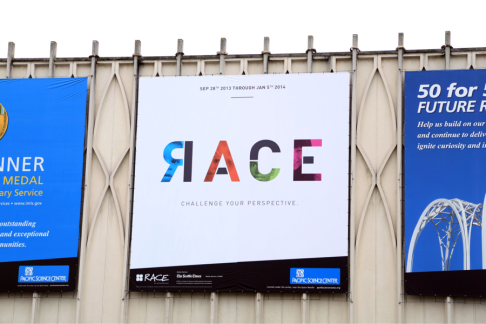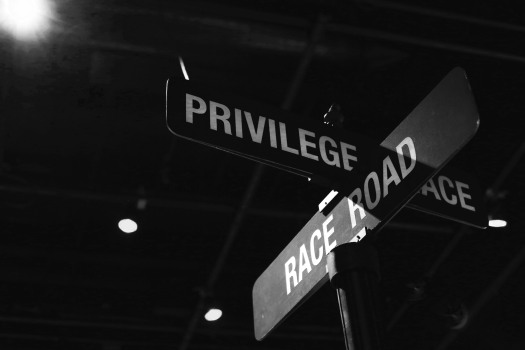You might have seen lots of coming-out stories in which parents accepted the fact that their children are not heterosexual. And there might be few Asian parents accepting it too. But still, I think this kind of happy-ending-coming-out stories do not happen in Asian families very often.
I know because I am one of those that have not been accepted. I didn’t even come out to my parents. My mother is still convincing me to wear my hair longer. She would even say that this is the only thing she asks for before she dies.
I feel depressed being such a disgraceful daughter. But I understand she’s not the only parent that would think this way. Many of our parents are traditional and conservative. But as their children, we might have never had enough nerve to tell them our thoughts and feelings. I doubt they know what it’s like being non-heterosexual.
It’s time for them to listen to our stories. I would like you to meet Benjamin Chan, Pauline Cheung, Shelly Rose*, Macy Aviles** and Winnie Cheung. They are all Asian American. Here are their coming out stories:
Hiding His Sexuality Because of Parents’ Religion
Benjamin Chan, 28, came to the United States in 2001. He’s been living in Hong Kong for 16 years before that. At the age of 11, he realized he liked hanging out with boys and felt awkward being with girls. Not knowing what homosexuality was, he chose to keep his feelings secret.
However, everything became clearer when Chan was older.
“…When I [was] old enough to have the desire— the sexual desire, then I realized, yes,” Chan recalled how he confirmed about his sexuality.
But still, he didn’t tell anyone because being gay wasn’t common in Hong Kong at that time. He has always thought he would tell his parents, who are still living in Hong Kong, after he got into a stable relationship. Today, he has found a man he loves but he hasn’t told his parents yet.
“If I tell them, they might just fly right away and try to convert me back,” said Chan. “Especially they are very religious. They’re Christians and they work at church.”
In Chan’s case, both tradition and religion have made him believe that it would be very hard for his parents to accept the fact that their son is gay. He doesn’t want his parents to feel bad and this is why he hasn’t come out yet.
Muslim Girl Punished Herself After Revealing Her Sexual Desire Toward Girls
Shelly Rose, currently a senior student at University of Virginia, was born and raised in a South Asian Muslim family. She told me in an email conversation that she has even attempted to hurt herself after she dated a girl.
Rose’s family holds “very strong views on homosexuality.” To her mother, homosexual people are all “going to hell” and “deserve to die”; To her father, the Uganda’s Anti-Homosexuality Bill that punishes gay people with death penalty is good.
During her senior year at high school, Rose dated a close female friend. Not surprisingly, they happened to become intimate one night. But she felt guilty about her sexual desire after that and she “punished” herself.
“I felt like God didn’t love me anymore. I felt like there was no way I’d ever be forgiven. I felt like I was damned to hell anyway. I felt like I needed to punish myself. So I took a surgical knife and cut into my left wrist. It wasn’t very deep, but it was painful. And thus began my habit of “punishing” myself whenever I felt like I had failed as a person,” Rose said.
Until now Rose hasn’t come out to her parents yet. Even though she has already come out to some of her cousins, she still has “intense fear” of telling her parents the truth. She thinks the whole Bengali community would “shun” her family because of her sexuality.
Coming Out to Mom Worries Her
Pauline Cheung, 34, was born in Hong Kong. She and her family moved to Seattle when she was 14. Growing up in Hong Kong, she saw that being non-heterosexual wasn’t very common at that time.
She went to a girls’ school when she was in Hong Kong. At that time, she had crushes on female friends and teachers. However, even later on when she studied in a co-ed school in Seattle, she has never had any strong feelings for males.
In March this year, Cheung told her mother about her sexuality. Her mother was so shocked and sad that Cheung worried if she was going to hurt herself. Although she left the house after the coming out, she drove back again to see if her mother was fine.
“I was so nervous I remember. The drive wasn’t that long. The drive was like 15 minutes but I’ve all these thoughts in my mind: Oh my god. What have I done? What if she hurt herself?” said Cheung.
Fortunately, Cheung’s mum was fine and she accepted her. Cheung thinks that her mum was just worrying about her and her future.
The Couple that Have Come Out to their Parents
Winnie Cheung, 23, is a blogger that writes about her own coming-out story. She was born and raised in a Hong Kong and Canton family. According to her blog, her coming-out story lasted for 7 years.
Though she’s raised and born in US, she essentially grew up in a “Chinese cave.”
“I watched shows that put men and women in their ‘traditional roles,’ respectively. Growing up, I knew what I was taught and I knew that I was supposed to like boys, grow up and marry a dude and have kids with him. Oh, the dumplings that life throws at you …” Cheung said on her blog.
Cheung didn’t come out until one day when her parents burst into her room. She was about to give her girlfriend a kiss. Then, they “forced” her to come out.
“They’d tell me, ‘You’re gay. Just tell me you’re gay. Admit it. So if you’re not gay then tell me you’re not,’” Cheung said.
At that time, she was just 16. Now she’s 23 and her parents have already accepted her. Although it’s been a long jourrney, she thinks she and her parents have become stronger and closer than ever, after all these years.
Macy Aviles, 23, is Cheung’s girlfriend. Her family is from the Philippines. She didn’t tell her parents earlier about her sexuality because she didn’t feel safe and comfortable to.
“I actually have two lesbians in my family who are together but they’re very hushed in the family and no one really talks about it,” Aviles said. “ No one asked and no one said anything.”
But later on, she felt like she couldn’t hide from her parents that she liked girls. Aviles decided to tell them. However, the first year after she came out was very hard. Her parents did not accept her until she started bringing her girlfriend and friends home. She thinks that showed her parents how happy she was.
“Or, when I broke up with girlfriend, I took a chance, called my mum and told her how sad I was. I tried really hard to show them how real it made me feel,” said Aviles.
Today, both of them have come out and are accepted. They are even going to Hawaii together with Cheung’s parents during the Christimas’ holiday. Besides wishing them more happiness, I’m also hoping that this documentary could bring such happy ending to more Asian families.
The documentary is not done yet. More will be coming out in 2014. Please stay tuned.
After watching the video and reading the article, please vote:
If you want to share your stories with us, please contact us using the form below.
Notes:
*Shelly Rose is not her real name. The interviewee decided not to reveal her real name.
**Macy Aviles is not her real name. The interviewee decided to identify with this name.


